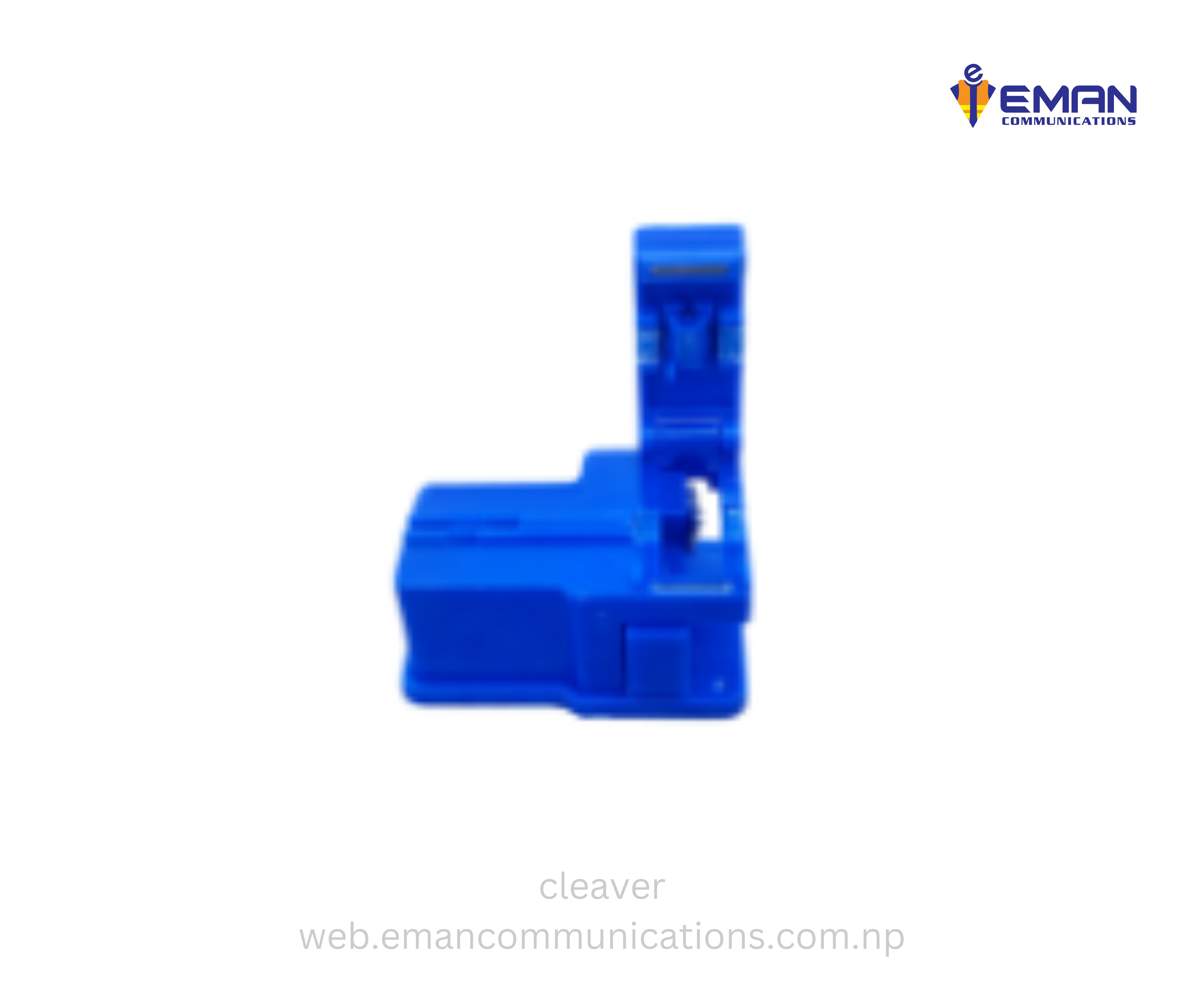Plastic Cleaver
Plastic Cleaver
Overview:
A fiber plastic cleaver is a tool used in fiber optic cable installation and maintenance. It is used to precisely cleave or cut the end of an optical fiber to prepare it for fusion splicing or connector termination. Fiber plastic cleaver is one of the essential tools used to prepare fiber optic cables for splicing. They are designed to precisely cut the fiber, creating a clean and flat surface that enables optimal connections. By utilizing the principle of controlled cleave, fiber cleavers ensure low splice loss and consistent performance. Fiber plastic cleaver is a vital tool used to precisely cut fiber optic cables, resulting in clean and smooth ends. This is essential for efficient light transmission as any irregularities or imperfections can cause signal loss and diminish overall performance. The cleaved ends are then connected to various components, enabling data to travel seamlessly through the network.
Here are some key points about fiber optic cleavers:
A fiber plastic cleaver is a specialized tool used in fiber optic cable installation and maintenance, specifically designed for cleaving or cutting plastic optical fibers (POFs). POFs are a type of optical fiber made from plastic materials such as polymethyl methacrylate (PMMA) or polycarbonate.
Here are some key points about fiber plastic cleavers:
Purpose: The primary purpose of an fiber plastic cleaver is to precisely cleave or cut the end of a plastic optical fiber to prepare it for termination or connection. This cleaving process ensures that the fiber end-face is flat, smooth, and perpendicular to the fiber axis, which is essential for efficient light transmission and reliable connections.
Design: fiber plastic cleavers are specifically designed to accommodate the characteristics of plastic optical fibers, which may have different mechanical properties compared to glass fibers. These cleavers often feature specialized blades and mechanisms optimized for cleaving plastic fibers without causing damage or deformation.
Precision: Like cleavers used for glass optical fibers, precision is crucial in the cleaving process for plastic optical fibers. The cleaver must create a clean, flat end-face with minimal chips or defects to ensure low insertion loss and reliable connections.
Usage: fiber plastic cleavers are used in various applications where plastic optical fibers are deployed, including automotive networking, home networking, industrial automation, and consumer electronics. They are used by technicians and engineers during installation, maintenance, and repair of POF-based systems.
Maintenance: Proper maintenance and calibration of fiber plastic cleavers are essential to ensure accurate and consistent cleaving performance. Regular cleaning and inspection of the cleaving blade and alignment mechanism are necessary to prevent contamination and ensure optimal cleaving quality.
Safety: As with any fiber optic cleaving tool, technicians should follow safety protocols when using optical fiber plastic cleavers to avoid injury and protect the equipment. This includes wearing appropriate personal protective equipment and handling fibers carefully to prevent damage.
Overall, fiber plastic cleavers play a vital role in the installation and maintenance of plastic optical fiber systems, enabling precise cleaving for reliable optical connections in various applications.
Purpose: Fiber plastic cleavers are used to create a flat, perpendicular end-face on an optical fiber. This ensures that when two fibers are spliced together or connected with a connector, they will have minimal loss of light signal due to reflection or scattering at the splice or connection point.
Types: There are various types of fiber plastic cleavers available, including manual cleavers, semi-automatic cleavers, and fully automatic cleavers. Manual cleavers require manual operation to score and cleave the fiber, while semi-automatic and fully automatic cleavers have mechanisms to automate some or all of the cleaving process.
Precision: Precision is crucial in fiber plastic optic cleaving. The cleaver must create a clean, flat, and perpendicular end-face with minimal chips or defects to ensure low insertion loss and high signal integrity.
Usage: Fiber plastic cleavers are commonly used in telecommunications, data centers, fiber optic networks, and other industries where fiber optic cables are deployed. They are used by technicians and engineers during installation, maintenance, and repair of fiber optic systems.
Maintenance: Proper maintenance and calibration of fiber cleavers are essential to ensure accurate and consistent cleaving performance. Regular cleaning and inspection of the cleaving blade are necessary to prevent contamination and damage that could affect cleaving quality.
Safety: When using fiber cleavers, technicians should follow safety protocols to avoid injury and protect the equipment. This includes wearing appropriate personal protective equipment, handling fibers carefully to prevent damage, and using the cleaver according to manufacturer instructions.
Overall, fiber optic cleavers are indispensable tools in the field of fiber optics, enabling precise and reliable termination of optical fibers for various applications. Fiber optical cleaver are one of the most used tools in Nepal.
Financing
Estimated delivery date
Leave your detail here, we will call you back
Welcome to Support Center
Support for all your needs, in one place. Sign in to get personalized help and access your registered devices, software and existing service requests.
Why create an account
Unsubscribe









